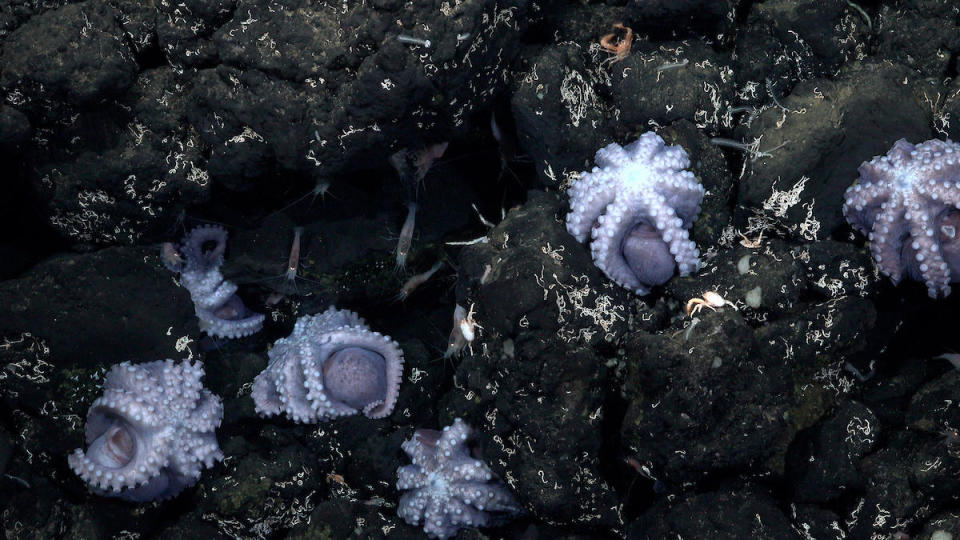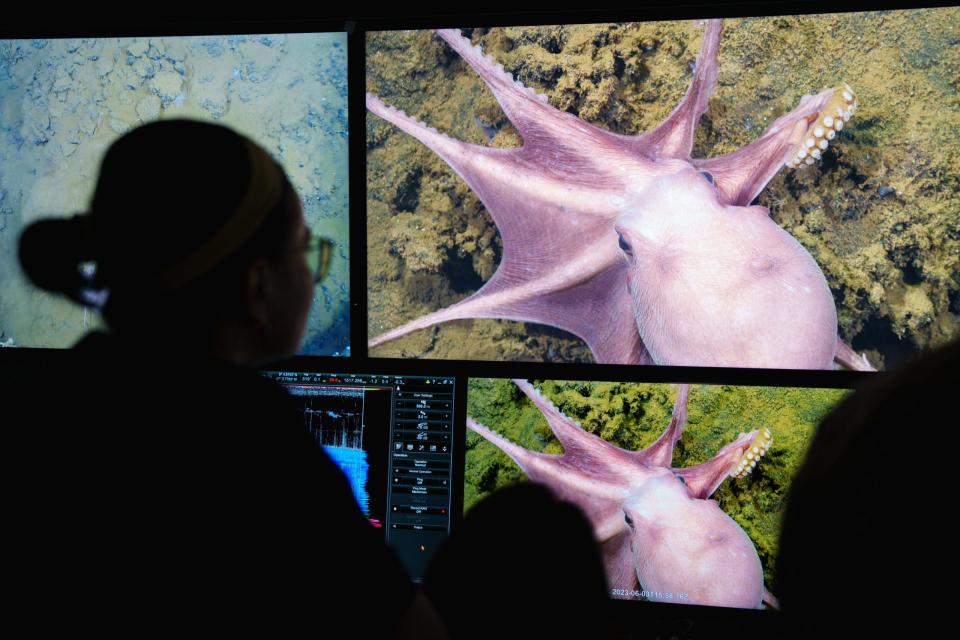Potential new octopus species discovered in rare nursery
A new species of octopus may have just been discovered off the coast of Costa Rica. It was found in a rare brooding site that marks only the third octopus nursery known to exist in the world.
The octopus nursery was first found in 2013 with roughly 100 female octopuses brooding at a cold hydrothermal vent off the coast of Puntarenas, Costa Rica. But at that time, researchers said that they didn't see any developing embryos. That led them to believe that conditions there were not conducive to the baby octopuses being born.

But that all changed earlier this year, when a team of international researchers ventured back and saw the octopuses hatch. Their birth makes the area the world's only third-known octopus nursery, and the first known nursery for a species of deep-sea octopus, in this case, the Dorado Outcrop.
In a press release, the Schmidt Ocean Institute said that researchers believe the mollusks may be a new species of octopus that stems from the Muusocotpus genus, which includes "small- to medium-sized octopus without an ink sac."
"The discovery of a new active octopus nursery over 2,800 meters (9,186 feet) beneath the sea surface in Costa Rican waters proves there is still so much to learn about our Ocean," the executive director of the Schmidt Ocean Institute, Jyotika Virmani, said in a news release. "The deep-sea off Costa Rica rides the edge of human imagination, with spectacular footage collected by ROV SuBastian of tripod fish, octopus hatchlings, and coral gardens."
According to the institute, the Dorado Outcrop is the "size of a soccer field," which is considered "small," and there are an estimated 100 female octopuses brooding their eggs in the location. Scientists have been studying the nursery because of the odd circumstances surrounding it.
"The behavior shocked cephalopod experts because octopuses were considered solitary creatures at the time. In the past, octopuses were observed fighting over territory or mating toward the end of their life," the Institute says on its website. "Female octopuses are known to brood their eggs alone in rocky crevices, passing away after their eggs hatch."
They also didn't see any embryos developing when it was first discovered.

Octopuses are often seen brooding in warm waters to reduce the amount of time it takes for the eggs to hatch.
In 2018, it was found that more than 1,000 members of a different species of octopus had nested in a warm geothermal spring nearly 2 miles underwater off the coast of California. That octopus garden was a little shallower, at nearly 1 3/4 miles underneath the ocean surface.
On their 19-day expedition in Costa Rica, researchers also discovered five never-before-seen seamounts, the Institute said. Those areas, including the area where the octopus nursery was found, are not currently protected, but were found with "thriving biodiversity," prompting some of the researchers to investigate whether those areas can be designated as marine protected areas. Under that designation, the sites would be preserved and protected by local organizations and the government.
"This expedition to the Pacific deep waters of Costa Rica has been a superb opportunity for us to get to know our own country," Dr. Jorge Cortes of the University of Costa Rica said in a press release. "The expedition had a significant number of local scientists and students which will accelerate our capacity to study deep regions. The information, samples, and images are important to Costa Rica to show its richness and will be used for scientific studies, and outreach to raise awareness of what we have and why we should protect it."
Video shows 6-year-old boy surviving 39-foot zip line fall in Mexico

